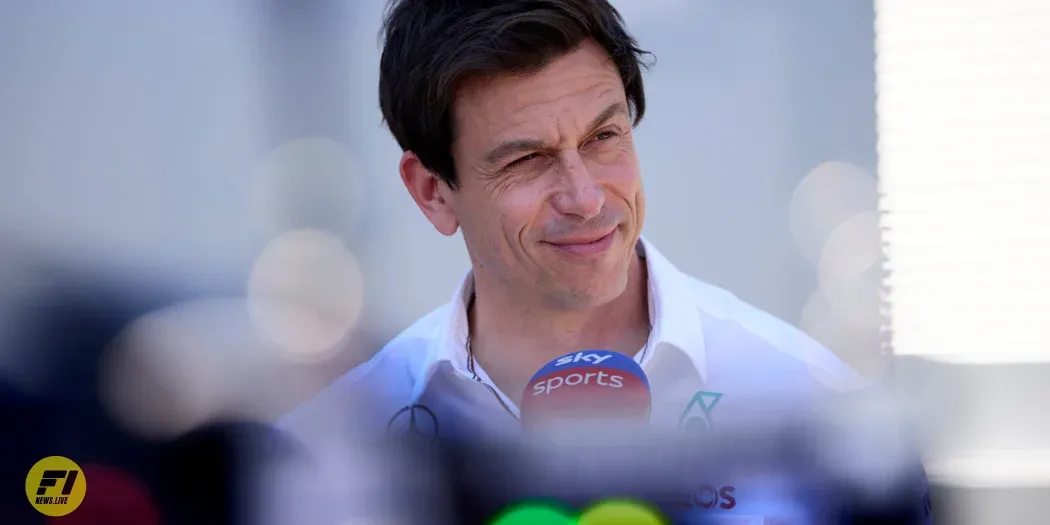F1 Round Up: Pitt's movie filming in Hungary and 2026 engine regulations
Brad Pitt's F1 movie continuing filming at the Hungarian GP, Mercedes and Ferrari refute cost cap breach rumors, and Red Bull voices concerns over 2026 engine regulations."

Brad Pitt's F1 movie continues despite by actor's strike
Despite strike actions by the (SAG-AFTRA), a union representing approximately 160,000 media professionals, filming for Apple's Formula 1 movie featuring Brad Pitt continues unhampered at the Hungarian Grand Prix.
Contrary to misinformed claims, production hasn't been stalled due to the strike.
The movie, portraying Pitt as a veteran F1 driver returning from retirement, has its fictional 11th team, APXGP, present in the paddock for the second consecutive race.
Brad Pitt is shooting today in Hungary after Qualifying
— F1News.live (@f1newslive_) July 22, 2023
pic.twitter.com/2EEpnwvvoC
Although on-screen filming involving Pitt has been concluded for now, stand-ins will handle on-track sequences in Hungary, much like the British GP where professionals drove for most of the filming, though Pitt did complete one lap himself.

Mercedes and Ferrari dismiss rumours of cost cap breach
In a year marked by changes in financial strategies due to the cost cap, rumours have been swirling that up to three teams breached the cap in the 2022 season.
However, Mercedes and Ferrari have distanced themselves from these reports, with the FIA stating the claims are "factually wrong."
Toto Wolff, Mercedes motorsport boss, outrightly refuted the speculations, asserting the cost cap now serves as a significant constraint, preventing them from introducing a 'B-spec' car.

This has prompted a shift in perspective, with the team now needing to balance their focus between the current and the following season.
Meanwhile, Ferrari has also admitted to facing budget constraints, which have influenced their capacity to undertake new projects or make significant advancements with their car during the season.
New 2026 engine regulations
The 2026 engine regulations, just two and a half years away, are stirring the pot in the F1 community.
The crux lies in the massive hike in electric power contribution. We're moving from 120 kilowatts (163 horsepower) to a whopping 350 kilowatts (475 horsepower).
With the electric surge comes extra weight. An extra 40 kilograms, to be exact, totalling 190 kilograms.

This increased load primarily stems from beefed-up batteries needed for greater electric power.
Changes are also brewing in the gearbox department.
The new power dynamic might see gears dropping from eight to six, adjusting to the enhanced electric input and altered vehicle weight distribution.
Red Bull's team chief, Christian Horner, isn't thrilled.

He's warned about the potential pitfalls of this trajectory - increased weight and high electric power contribution could derail chassis development and detract from the F1 spectacle.
There's worry these shifts could spawn technical nightmares, dampening the sport's thrill factor.
Competition dynamics could also be reshuffled. Traditional powerhouses and newcomers alike could see their fortunes change depending on their adaptability to the electric dominance.
Social Media
Here's another perspective on the evolution of Red Bull's sidepod design.#F1 [📷 @lukemotorsport] https://t.co/VBye394CnD pic.twitter.com/AET1kf5qMh
— F1News.live (@f1newslive_) July 20, 2023
More pictures of the fully assembled Red Bull sidepods. https://t.co/4MQXV7LCqN pic.twitter.com/ztOtQj213L
— F1News.live (@f1newslive_) July 20, 2023
Another view of the new Red Bull sidepod. #F1 #HungarianGP [📷AMuS] https://t.co/a1uo3XlDMv pic.twitter.com/3L5avJq3vf
— F1News.live (@f1newslive_) July 20, 2023
🚨| Laurent Rossi has been replaced has Alpine's CEO by Philippe Krief.
— F1News.live (@f1newslive_) July 20, 2023
Rossi will be focusing on 'managing special projects' within the group. #F1 pic.twitter.com/IG0OVqJyVz
🎙️| 🇭🇺 Hamilton on Red Bull's upgrades:
— F1News.live (@f1newslive_) July 20, 2023
"I've heard that Red Bull is bringing another upgrade package this weekend, so we'll see how that affects things"
"They seem to bring upgrades to their cars all the time."#F1 #HungarianGP pic.twitter.com/rqWUfPP7Qd
🎙️ | Sergio Perez on 2025 Red Bull seat:
— F1News.live (@f1newslive_) July 20, 2023
"I’ve been in F1 for 13 years so I’m not a guy who thinks so much further ahead, I’ve been with the engineers, I don’t even have the time to discuss what’s going on with Daniel.
I think it’s a great opportunity for him, and that’s it.… pic.twitter.com/iaoEI7OkG5
Alpine new front wing for the #HungarianGP #F1 [📷 Giorgio Piola] pic.twitter.com/M2q8ekiUAm
— F1News.live (@f1newslive_) July 20, 2023
Journalist: "What have you done with your time away?"
— F1News.live (@f1newslive_) July 20, 2023
Ricciardo: "I went to a bachelor party in a little place called Vegas."
Gasly: "I want to see pictures."
Ricciardo: "I’ll show them to you later." pic.twitter.com/3PTmJsPSKq





Comments ()